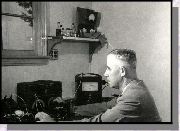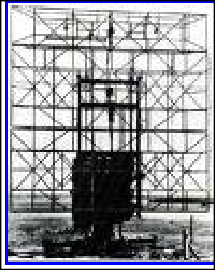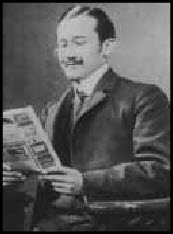



26th July 2008

A patent for a ‘telemobiloscope’ was applied for in 1904 in Dusseldorf, Germany by the individual who might most be given the accolade of being the inventor of ’Radar’ - although at the time his invention was not called that and nor had the acronym been conceived. Only two weeks after his patent application, Huelsmeyer gave a public demonstration of his device in which he successfully bounced signals onto – and received reflections back from, a ship approaching
The device was worked on further in 1927 by Dr Hans E Hollmann who built the first transmitter and receiver for centimetre wavelengths and this led to the first ‘micro-wave’ communications system. Hans-Karl von Willsen worked with Hollmann and a third scientist Gunther Erbsloeh and a device was perfected that could detect ships around 8 km away and aircraft flying at a height of 500m about 30 km away. The marine system was called “Seetakt” and the terrestrial system “Freya” - These three could be said to have created the application we most commonly associate with RADAR – that of detecting and assessing the distance of objects.
In England during 1935 three individuals, Sir Robert Watson-Watt, A. F. Wilkins (2) and H. E. Wimperis along with Sir Henry Tizard all contributed to developing a system ( ’Chain Home’ ) to a state where it could be used effectively – as indeed it was throughout W.W.II
Chain Home was as a significant development in the use of radar
Chain Home was as a significant development in the use of radar
Inventors & Inventions
IF IN DOUBT ASK !!!!
the Hoenzollern Bridge over the River Rhine in Cologne
The device was only really designed to detect an object – not to
The device was only really designed to detect an object – not to
assess how far away the target object was but the principle and the system required had been created. The invention was significant in the development of what came to be ‘radar’


Dr Hans E Hollmann - lower picture and his ‘Freya’ arial

Given all of the subsequent developments and use of radar it is interesting that in his patent, Hülsmeyer rather intriguingly suggested that his invention could even be used as a remote control -- " for actuating mechanism placed at a distance, for instance closing circuits and releasing clockworks [and] for the purpose of turning on and off all kinds of lights" or activating railroad switches and signals. He had originally developed the system for use on congested waterways following the death of a friend in a ship-collision accident.

Huelsmeyer’s ‘Telemobiloscope



